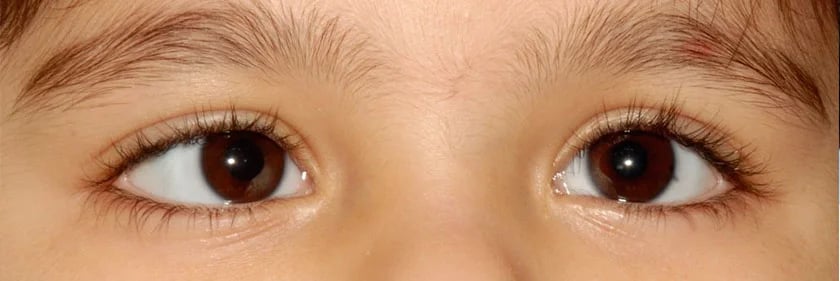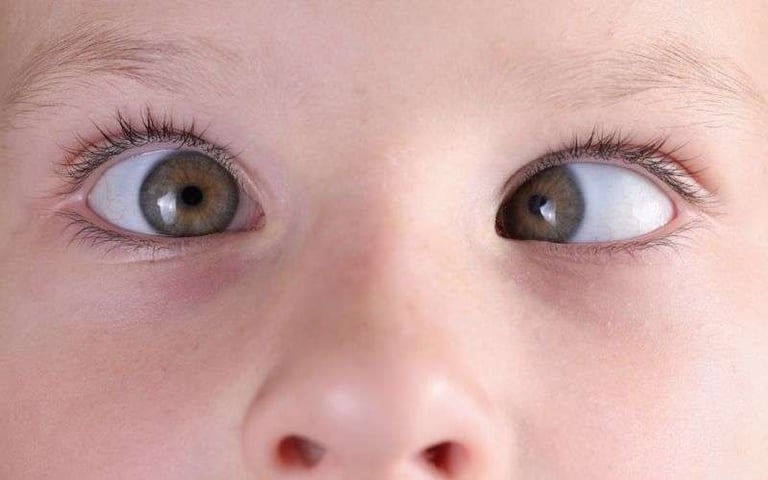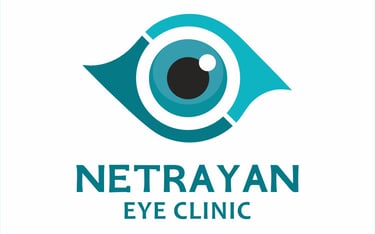Welcome to NETRAYAN EYE CLINIC Kothurd Centre📞090115 07079 Pirangut Centre 📞076200 1095
Warje Centre 📞090605 07014


Squint Eye Surgery in Pune
What is Squint?
Squint is a disorder in which the eyes don’t look in exactly the same direction at the same time.
It is also known as ‘Strabismus’ or ‘Cross eyed’. It is caused due to a misalignment between the two eyes and is particularly common in children, but may occur at any age.
Services
Cataract
Eye Treatment
Lasik
Cornea
Glaucoma
Kerotoconus
Oculoplasty Surgery
Diabetic Retinopathy
Paediatric Ophthmology
Intravitreal Injections
Retina Laser and Surgery
Squint Eye Surgery in Pune


Understanding Squint Eye (Strabismus)
Squint eye, or strabismus, occurs when the eyes are misaligned, often causing one eye to turn inward, outward, upward, or downward. This condition can lead to double vision, loss of depth perception, and in children, amblyopia (lazy eye). Identifying the type of squint—such as esotropia, exotropia, hypertropia, or hypotropia—allows for a personalized treatment plan, essential for achieving the best surgical outcomes.
Types of Squint Eye
There are different types of squint eye, each presenting unique characteristics:
Esotropia: This is a common inward turning of one or both eyes, especially in young children.
Exotropia: An outward turn of one or both eyes, which may be noticeable when a person is tired or trying to focus.
Hypertropia: One eye turns upward compared to the other.
Hypotropia: One eye turns downward relative to the other.
Identifying the type of squint helps Doctor create a personalized treatment plan to achieve the best outcome for each patient.
Risk Factors
What are the risk factors leading to squint?
Hypermetropia (far-sightedness)
Family history of squint
Damage to the nerve supply of a muscle
Staring at a computer screen for long hours
Squint Eye Surgery Procedure
Squint eye surgery is a straightforward outpatient procedure with a high success rate. Here’s what patients can expect:
Pre-Operative Assessment: Doctor conducts a comprehensive evaluation to determine the degree and type of squint, along with any other vision concerns. Detailed measurements of eye alignment ensure precise correction.
Surgical Process: During surgery, Doctor adjusts the muscles around the eyes to correct their alignment. By strengthening or loosening specific muscles, he brings the eyes into proper positioning. The procedure is typically done under local or general anesthesia and can take about an hour.
Post-Operative Care: After surgery, patients may experience mild discomfort, redness, or blurred vision, which subsides over a few days. Follow-up visits ensure that healing progresses as expected.
meticulous approach, advanced technology, and patient-centered care contribute to the high success rates and patient satisfaction seen in his practice.
Risk Factors Associated with Squint Eye Surgery
While squint eye surgery is safe, it’s essential to be aware of potential risks:
Infection: Like any surgery, there’s a minimal risk of infection, though this is rare with proper care.
Overcorrection or Undercorrection: While rare, the eyes may not be perfectly aligned post-surgery. Doctor's expertise minimizes this risk, with corrective measures available if needed.
Double Vision: Some patients experience temporary double vision post-surgery, which usually resolves over time.
Anesthesia Risks: Anesthesia carries minor risks, though the team at Netrayan Eye Clinic clinic takes comprehensive precautions to ensure safety.
Preparing for Squint Eye Surgery
Preparing for squint eye surgery is straightforward but important. Patients are advised to:
Follow pre-surgery instructions, such as stopping specific medications if advised.
Arrange for a family member or friend to accompany them on the day of surgery.
Attend all follow-up appointments to monitor healing and achieve the best results.
By following these steps, patients can feel confident and prepared for the procedure.

Phone: 090605 07014
Address: 1st Floor, Audumber Society, Office No, 101/B, above Tata Motors Showroom, Warje, Pune, Maharashtra 411052
© 2024. All rights reserved. Netrayan Eye Clinic. Design & Develop by Discovery Media Services
Phone: 090115 07079
Address: Besides Hotel Sheetal, Karve Statue,C-1, Madhavhari Apartment, Karve Rd, Kothrud, Pune Maharashtra 411038


Warje Center
Kothrud Center
Phone: 076200 10950
Address: Aastha Hospital, first floor, Opp. Mulshi towers, besides pirangut police chowki, Near ghotawade phata, paud road, Pirangut.
Pirangut Center
